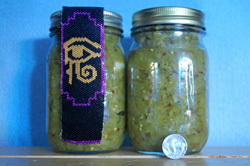Variety Is The Spice of Write
Over the last several weeks, I’ve been doing a bunch of things that – to an outside observer – would appear to have nothing at all to do with writing. However, in how these things are stimulating my imagination, they’re having a wonderful impact on my creativity.

Various Activities
Last Friday, I went with Jim to a coin show. Jim is our family’s coin collector, but I often go along with him and our friend Michael Wester. Michael mentioned that he’d promised a mutual friend that he’d look for some buffalo nickels. I volunteered to help stretch our friend’s funds by searching through the loose coin boxes and see what I could find. Since the coins in these boxes have usually only had minimal sorting – usually to cherry pick out the best coins of a type – it’s possible to find some interesting things.
Armed with Jim’s magnifier, I set to work. In the course, I learned a lot of things, both about coins and otherwise. I learned that buffalo nickels were not well-designed (at least from a collector’s point of view) because the date is placed where it quickly wore off, as did the artist’s initial and other details. This meant that many of the coins I looked at had a smooth spot where the date should have been. I also learned that the tiny “S” or “D” mint marks were on the opposite side of the coin, so that to inspect coin properly, both sides needed to be checked.
Jim estimates that I looked at well over a thousand coins. In the course of this, I found twenty-two different dates and/or mint marks. I also found one 1935 nickel that had slipped through the pre-sorting. It was still very shiny, the date and mint mark both clear, as was the tiny “F” that was the artist’s mark. I bought this one for myself as a memento.
I also overheard some very interesting conversations, including one where a retired military officer mentioned being called back out of retirement because his specialization was needed. He also talked about various investments he’d made – none of which were things I would have every considered as options. As I sorted, I also had a nice chat with two of the coin vendors, and learned a lot about the trade.
On Saturday, Jim and I met our friend, Chip, and went to the natural history museum. The New Mexico Natural History Museum is one of the “youngest” such museums in the country. One of the very cool aspects is that, if you so choose, you can visit the various galleries in order of time, rather than randomly, by subject. You begin with the formation of the universe and solar system, then the planet, then progress to theories regarding how life might have come to be.
From there, you get to wander along, viewing increasingly complex lifeforms, up to prehistoric mammals like mastodons and mammoths. Oh, and dire wolves, of course!
Another thing that makes our natural history museum cool is that whenever possible the displays are tied to New Mexico. For example, instead of a generalized discussion of how areas that were once swamps are now mountains or deserts, the displays use sites in New Mexico to show the changes. This makes change on a geologic level a whole lot more real. The time-organized route ends where you can look into a paleontology lab, where fossils are being prepared for future displays. It’s really fascinating.
After we finished with the museum, Jim and I stopped to buy beads so I could finish a bracelet I’ve been weaving in my spare time over the last couple of weeks. For those of you who are into this sort of thing, I’m using even count flat peyote stitch. The original Eye of Horus pattern was odd count, but I find odd count too much of a hassle, so I adapted to even count.
Anyhow, after many hours and well over a thousand beads, I came up short by about eight rows. However, now it’s done and I’m looking forward to wearing it.
This past Thursday night, we finally had our killing frost. Earlier in the week, I spent a fair number of hours out in the garden, picking everything that could be saved. I also picked a bucket of green tomatoes, so we could renew our supply of green tomato relish.
The recipe we use is my maternal grandmother’s and is suitably old-fashioned, with measurements in bushels and pecks. However, with the aid of a dictionary, we converted the amounts to cups. We could have done metric and really brought the recipe into the 21st century, I suppose, but most of our cooking gear doesn’t have both formats.
It’s funny but, although I think of this as my grandmother’s recipe, we’ve adapted it to our tastes. The original calls for white vinegar, but we use apple cider vinegar. The original calls for green peppers, but we substitute some jalepeños, making for a hot/sweet relish, rather than just sweet. The end result is very good and worth the labor.
Another interesting thing about the recipe is how very much the process reduces the vegetables, mostly by removing liquid. When we finished the first stage of preparation, we had 36 cups of ground vegetables. This sat overnight covered in salt to draw off some of the liquid. By the next day, after we drained off the liquid, we had about half as much raw material. When we cooked this in vinegar, sugar, and added spices, then bottled the end result, we were down to seven and a half pints.
That, fifteen cups, for those of you who don’t do pints…
So, what does any of this have to do with writing? I’d enjoy hearing what you think…





